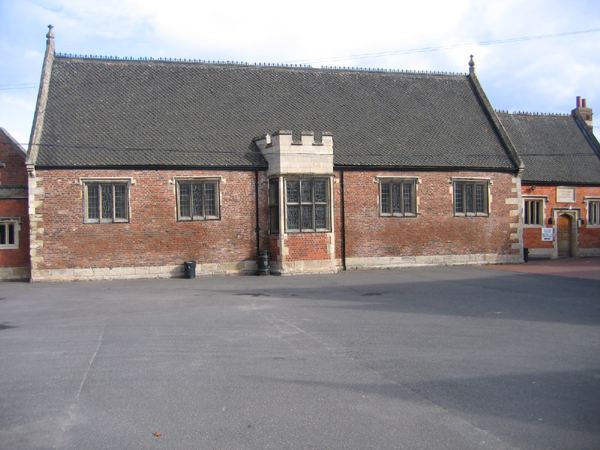Headteacher John McHenry DfE number 925/5424 Founded 1555 Number of students 507 | Chairman of Governors Phillip Bosworth Phone +44 1205 366444 Motto Floreat Bostona Colors Amber, Black, Yellow | |
 | ||
Established 1555; 462 years ago (1555) Location South EndBostonLincolnshirePE21 6JYEngland Profiles | ||
The Boston Grammar School is a selective grammar school and sixth form college for boys aged 11 to 18 and girls attending the sixth form aged 16–18 located in Boston, Lincolnshire, England.
Contents
- Gangnam style boston grammar school staff
- History
- Houses
- Beast Mart
- Charter Day
- Prizegiving
- Notable former pupils
- References
Gangnam style boston grammar school staff
History
The school was founded by charter of Philip and Mary in 1555. The oldest sections of the school were built in 1567, formerly referred to as the "big school" and is now used as the school library. South End Site became the model for Boston Latin School which was the first school in what was to become the United States of America. The school still retains the Latin motto 'Floreat Bostona' (May Boston Flourish). This motto also forms the title of the official school song, written by Dr G.E. Pattenden, headmaster from 1850–1887, which he referred to as 'my school hymn'. The song is still sung at official school occasions such as Prizegiving, Charter Day and Beastmart, and is generally fondly remembered by Old Boys of the school.
In the 1960s when under Holland County Council Education Committee, it was a voluntary controlled school with around 500 boys, 550 by the 1970s, and 600 by the 1990s. The school had a CCF.
In recent years girls have been admitted to the sixth form for the first time. There were 597 pupils on roll as at April 2008, including 170 in the sixth form. The school has been awarded Technology College and Sports specialist status. In December 2012, Boston Grammar School shut its doors for the final time as a selective school, run by the local authority. In January 2013, Boston Grammar School re-opened as a selective academy.
Houses
There are four houses in the school named after important figures in the school's history. Each is associated with a different colour which is reflected in PE shirts, and boys are assigned to a house when they join the school on an arbitrary basis in order to create different groups for school activities, including Sports Day.
Laughton - (yellow), John Laughton left a bequest to the local bluecoats' school. On its closure this was subsequently given to the grammar school Head of House: Miss. Amanda Cook;
Muston - (blue), Robert De Muston was the first schoolmaster of Boston in 1329. Head of House: Mr. Alan Mountford;
Gannock - (red), William Gannock was the Mayor of Boston at the time the school was built on its current site in 1567. Head of House: Miss. Christine Abrams;
Parry - (green), John Parry the Liberal MP for Boston who in 1875 gave a gold medal to the scholar of the year. This medal is still awarded to the student who attains the best A level results each year. Head of House: Miss Louise Brown
Beast Mart
Beast Mart is an annual half-day holiday, awarded to boys to commemorate the annual cattle market that took place traditionally in the school yard (the Beast Yard). The Beast Mart declaration takes place one day in December each year. The Council Chief Executive (in place of the historical Town Clerk) reads the declaration of the Beast Mart and the Mayor requests that the headmaster give the school a half-day holiday. The head of school then leads three cheers to the Queen and the Mayor calling "hip, hip, hip!"
Charter Day
A celebration of the granting of the school charter takes place annually at St Botolph's Church, Boston, (known locally as Boston Stump). During this celebration the school song is traditionally sung.
Prizegiving
An annual prizegiving ceremony is held in December of each year. During this event a number of awards recognising achievement in academic disciplines, sport and other areas are awarded. Old boys are often in attendance, including the previous year's A-level students who return to receive their A-level certificates. The prestigious Parry Gold Medal is awarded to the student who achieved the best A-level Results. A guest speaker is always invited, and notable guests of honour have included Helen Sharman, Barry Spikings and Mark Simmonds MP.
